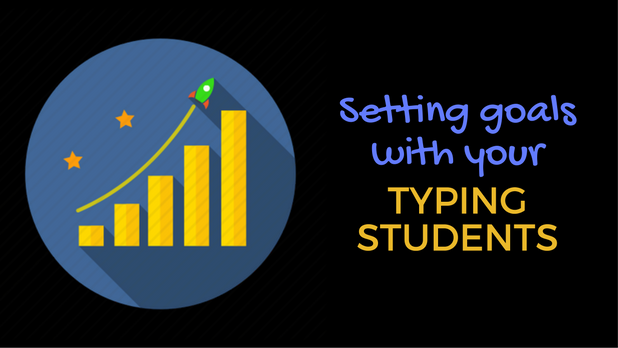Setting Goals with Your Typing Students
Studies show that people who write down clearly defined goals are more likely to succeed than those who don’t.
It’s no surprise then that everyone from professional athletes, to business managers, to politicians tend to set clear and specific goals for themselves.
As a teacher, goal setting can be a powerful practice to boost student achievement and to invest students in what they’re learning.
While short term goals are important, at the beginning of the school year, setting long term goals can ground students in what they are working towards and give them a clear purpose for their daily lessons.
One great place to use long term goals? Typing, of course!
Students are much more likely to focus on their typing lessons when they have a clear picture of what they’re aiming for.
So consider kicking off the school year with some typing goal setting.
Investing Students in Goals
Goals are only valuable if students have a genuine desire to meet them.
Make sure that you introduce the idea of goal setting as its own mini-lesson, giving it as much weight as you would any other academic subject.
Studies show that the act of writing down a goal is valuable in making it motivational. You might consider giving students a tracking sheet where they write down their initial WPM (more on this in a minute), their long term goal, and then keep track of their weekly progress.
It can also be valuable to remind students of other times they’ve set and met their goals. That time their soccer team won the championship? When they moved up a level in karate?
These reminders of how good it feels to accomplish what you’ve set out to do can boost students’ investment in the process.
Finally, don’t forget to mention what will happen once students meet their goals. For the most part, the feeling of success should motivate students in and of itself, but maybe students get their name on the “Typing Masters” wall or get a certificate they can take home to show their parents.
Giving recognition to students as they reach their goals will continue to build a culture of achievement in your classroom.
Typing Performance Metrics
When it comes to setting goals for students, there are two main metrics that are used to measure typing performance.
Words-per-minute (WPM) is the measure of a person’s typing speed, while accuracy denotes the number of mistyped characters.
Typically, it makes more sense to set a blanket goal around accuracy for your whole class. You want to instill the importance of accurate typing over speed when students first get started.
We recommend having students in grades K-3 shoot for 80-85% accuracy, and students in grades 4 and up aim for 90% and above.
WPM goals, on the other hand, will typically vary from student to student depending on their initial typing speed.
While there is no set rule for how fast students of a given age should be typing, the following list gives ballpark WPM rates:
– Kindergarten: 5-7 WPM
– 1st grade: 7-10 WPM
– 2nd grade: 10-12 WPM
– 3rd grade: 13-15 WPM
– 4th grade: 15-18 WPM
– 5th grade: 18-20 WPM
Obviously, these numbers will vary by student and depend on how much prior typing experience each child has.
Helping Students Set Goals
For WPM goals, it’s more powerful if students set their own, instead of having a prescribed goal assigned by a teacher.
That said, kids will definitely need some guidance here. If left to their own devices, students are likely to set unrealistic goals that don’t serve the purpose of being motivational.
A good place to start is to have students take 2-3 timed typing tests at the beginning of the year. Have students average their WPM from these and use this number as their starting point.
Students can record this number on a private goal tracking sheet, or you can publicly display these somewhere in your room.
From there, you can generally expect students to grow between 3-5 words per minute over the course of a school year. This assumes students are practicing 20-30 minutes per week. If students will be spending more time typing, they’re likely to see more growth.
Once students have set a goal for their typing progress within a given timeframe (say by Thanksgiving), have them take periodic typing tests on a monthly (or more frequent if they’re typing more often) basis. Each month they can record their new WPM alongside their goal and track the progress they are making.
Find a fun way to celebrate students as they meet their goals. For example, on our twitter account, some teachers post pictures of students with their certificates once they’ve broken 30wpm.
Fast fingers @alma_ais this morning. 30 wpm or more on a 5 minute test @Typing_com #lifeskill pic.twitter.com/0wzF5VKfXk
— Alma_AIS Matheny (@Alma_AISMatheny) May 4, 2017
Once goals are met, encourage students to set a new goal for themselves to help them keep their eye on the prize!

